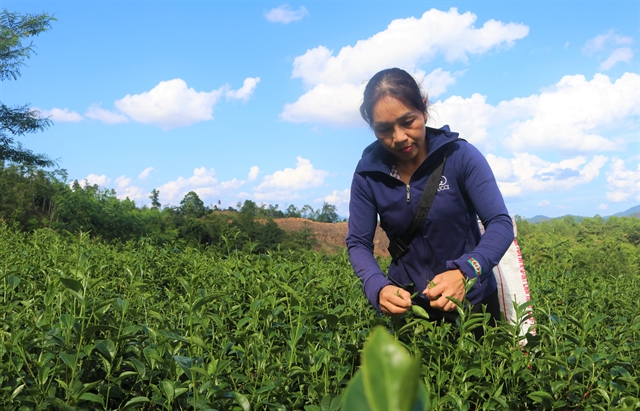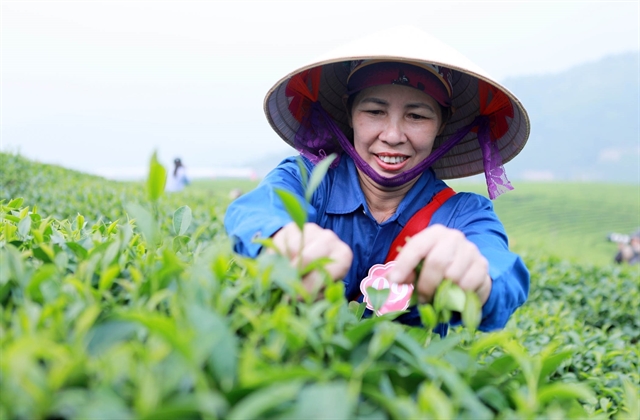 Economy
Economy

 |
| A farmer collects tea leaves in the northern province of Lai Châu. The climate and soil quality in the northern region are suitable for growing tea. — VNA/VNS Photo Quý Trung |
PHÚ THỌ — Việt Nam has become the fifth-largest tea exporter in the world with 108,000 tonnes exported by the end of September, generating a turnover of US$189 million.
That volume is a 31.9 per cent increase compared to the first nine months of 2023, while the export value was up 34.2 per cent.
This is a marked acceleration from the end of July, when Việt Nam was only the world’s eighth-largest tea exporter, earning $135 million from exporting around 78,000 tonnes of tea.
The information was provided at a conference on promoting the production and consumption of high-quality tea, held on Tuesday in Phú Thọ Province by the Department of Crop Production (under the Ministry of Agriculture and Rural Development), the Vietnam Gardening Association and the Northern Mountainous Agriculture and Forestry Science Institute (NOMAFSI).
Tea output tends to increase in recent years due to increased productivity, despite a slight decrease in growing areas, according deputy director of the Department of Crop Production, Nguyễn Quốc Mạnh.
Comparing international and domestic tea consumption in 2022, he pointed out that the 48,000 tonnes sold in the country were worth about $325 million, while the 146,000 tonnes of tea exports created a value of only $237 million.
“The amount of tea consumed domestically was only one-third of the volume of tea exports, but the value of domestic consumption is higher. So finding ways to increase export value is still a challenge for the Vietnamese tea industry,” Mạnh said.
Việt Nam’s tea products have been exported to more than 100 countries and territories. Key markets include Pakistan, Taiwan (China), Russia, China, the United States and the EU, according to the Department of Quality, Processing and Market Development, also under the agriculture ministry.
To date, the country has processed about 15 different types of tea, with black and green tea being the main types. — VNS




